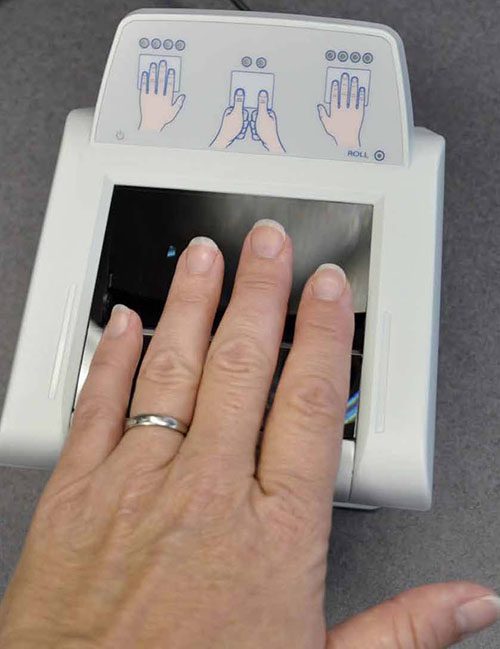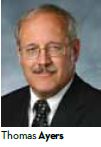 Until recently, airports had just one option for channeling their data for TSA-required employee background checks, a clearinghouse operated by the American Association of Airport Executives. It collected fingerprints and other pertinent information for every employee at every affected U.S. airport and submitted it to TSA.
Until recently, airports had just one option for channeling their data for TSA-required employee background checks, a clearinghouse operated by the American Association of Airport Executives. It collected fingerprints and other pertinent information for every employee at every affected U.S. airport and submitted it to TSA.
But that began to change in 2011, when TSA awarded contracts to two other service providers: Telos Identity Management Solutions and L-1 Identity Solutions. In March, Telos ID became the first additional channeler to receive TSA certification and authority to operate. And in May, Sacramento International Airport (SMF) proudly became the first to try the new clearinghouse. L-1 is currently in the process of securing final TSA certification.
Sacramento County Airport System officials are thrilled with the change toward a more free market approach. The availability of additional TSA-approved channeling providers speeds turnaround time and makes the process more efficient by adding competition to the marketplace, reasons Hardy Acree, director of the Sacramento County Airport System.
When every airport channeled security clearances through the same clearinghouse, it bogged the process, he explains. “If the system went down, there were times where we were without the ability to process fingerprints for weeks,” reports Acree. “We are now seeing the benefits of having increased competition in the market. Costs have gone down and the levels of customer service have increased significantly.”
Streamlining the System
|
factsfigures Project: Channeling Service for Employee Background Checks
Location: Provider: Telos Identity Management Solutions Benefits: Lower cost; quicker turnaround; better customer service Of Note: The first U.S. airport to utilize an alternative channeling clearinghouse since TSA awarded contracts to two new providers. |
“When the decision was made to bring new channelers onboard, the TSA used this opportunity to make changes to the basic processing methods,” says Bonnie Hankins, manager of airport security for the Sacramento County Airport System.
The original system — designed to support fingerprint-based criminal background checks and security threat assessments for all airport employees — involved a manual two-step process.
Security officials captured the fingerprints for badge renewals and new hires and grouped them into a single transmission that was relayed to the clearinghouse at the end of each business day. Officials also entered security threat assessment data into a spreadsheet that they uploaded to the clearinghouse in a separate daily transmission. Right-to-work paperwork and immigration papers were sent, via mail or fax, upon request.
Under TSA’s new system, threat assessment data, right-to-work paperwork and fingerprints are entered into a single record that is transmitted in real time. The resulting improvement in efficiency and accuracy is key for an airport like SMF, which submits up to 500 new hire enrollments and 3,500 badge renewal checks annually, notes Hankins.
The data entry process operates efficiently, she notes, with drop-down menus and checkboxes, and self-populating fields. “Check boxes and drop-down menus work well if you have more than one answer to choose from,” explains Thomas Ayers, director of engineering for Telos ID.
In addition, the system enables airport officials to designate different badge types for specific areas of the airport. “Some airports have unique naming conventions for each area,” Ayers explains. “They just pick the specific name from a drop-down menu.”
 Data Attachments
Data Attachments
Hankins also applauds a recent change that allows airports to submit supporting documentation for employees’ security threat assessments earlier in the process. “In the past, the TSA would begin reviewing an applicant’s information and then send letters asking for additional documentation,” explains Ayers.
Officials now submit common supporting paperwork upfront, which saves a lot of time, he adds.
SMF used to wait several weeks or months to receive security threat assessments for foreign-born individuals; now they arrive within a week, reports Hankins. “That’s a big impact to an individual who can’t start their airport job until they have their airport badge,” she adds.
The airport further speeds the process by asking vendors to have applicants bring immigration documentation with them when they come in for fingerprinting. Badging operators scan this information into the system, create a PDF, and attach it to the official security record.
Concessionaires, in particular, appreciate the speedier new process because it “enhances their ability to predictably staff their operations,” says Linda Cutler, the deputy director of Commercial Strategy at Sacramento County Airport System.
“A concessionaire employee, whose wages are little more than minimum wage, cannot wait a month or two to start a new job,” explains Hankins.
“Concessionaires would lose applicants when the (background check) process took too long.”
Trade contractors that employ large numbers of foreign-born individuals will also benefit from the change. Companies can’t start work on a project until they have all of their fingerprints and security threat assessments in hand, notes Ayers. “(Contractors) would have people on their payroll, spinning their wheels, until the results came back,” he relates.
Slaps vs. Rolls
The ability of Telos’ system to accept “slaps” instead of rolled fingerprints has emerged to be a significant time-saver, says Hankins. With a rolled system, operators take 14 images: 10 individual fingerprints, prints from each thumb, and an image of the four fingerprints (without the thumb) together for each hand. In contrast, fingerprints commonly known as slaps or flats require only three images: the four fingers of each hand plus an image of each thumb. Slap segmentation divides single hand images into four images of individual fingers for analysis and background check purposes.
“It has had no impact on the accuracy of the results, but it has been so much easier and faster to capture fingerprints from applicants,” reports Hankins. “And the process is much easier to explain to an applicant with a language barrier.”
Compatibility with SMF’s existing fingerprint system — a Guardian, 10-print livescan fingerprinting device from Cross Match Technologies — was also an important plus.
“We didn’t have to purchase any new equipment,” says Hankins. “Telos provided and installed the new drivers needed to connect our fingerprinting equipment to its website.”
Securing Data
Using the Web-based Telos system keeps sensitive personal data more secure than storing it on local computers, says Ayers, noting that its system must meet stringent TSA data encryption standards. “There is less risk of data getting into the wrong hands,” he explains.
When airport officials log into the system, they can select the record for a specific individual to check the status of his or her security threat assessment and criminal history record check.
SMF also appreciates the accounting aspects of the Telos system, which tracks transactions and bills the airport at the end of the month. “Instead of having an escrow account that is drawn down as services are rendered, we get a monthly invoice and can obtain a complete list of every transaction on the bill to allow for 100-percent reconciliation before we pay,” Hankins explains.
More Refinements Ahead
Telos recently launched an applicant portal designed to further whittle down the time involved in submitting applications. The portal allows individual applicants to enter biographical information such as height, weight, and hair and eye color into the system. Airport officials then verify the information when the applicant comes in for fingerprinting.
Although SMF hasn’t implemented the new feature yet, officials are optimistic about its capabilities. “This would be a great efficiency for us,” says Hankins. “It would reduce the workload in our office. And for the applicants, the airlines and the tenants, it will further expedite the process.”
A portal designed for use by the hiring agency or signatory will also launch soon, Ayers reports. It will allow vendors to enter applicant data, which badging operators then review and either accept or follow up with a request for additional information.
Such enhancements, notes Acree, are a natural result of allowing more companies to vie for airports’ background data channeling business. “Competition is a marvelous thing,” he says. “We’ve seen more timely returns, lower costs of doing business and better customer service.”
Furthermore, he expects it to only get better: “I’m positive, as a third provider comes online in the months to come, the increased competition will produce even more positive results.”



